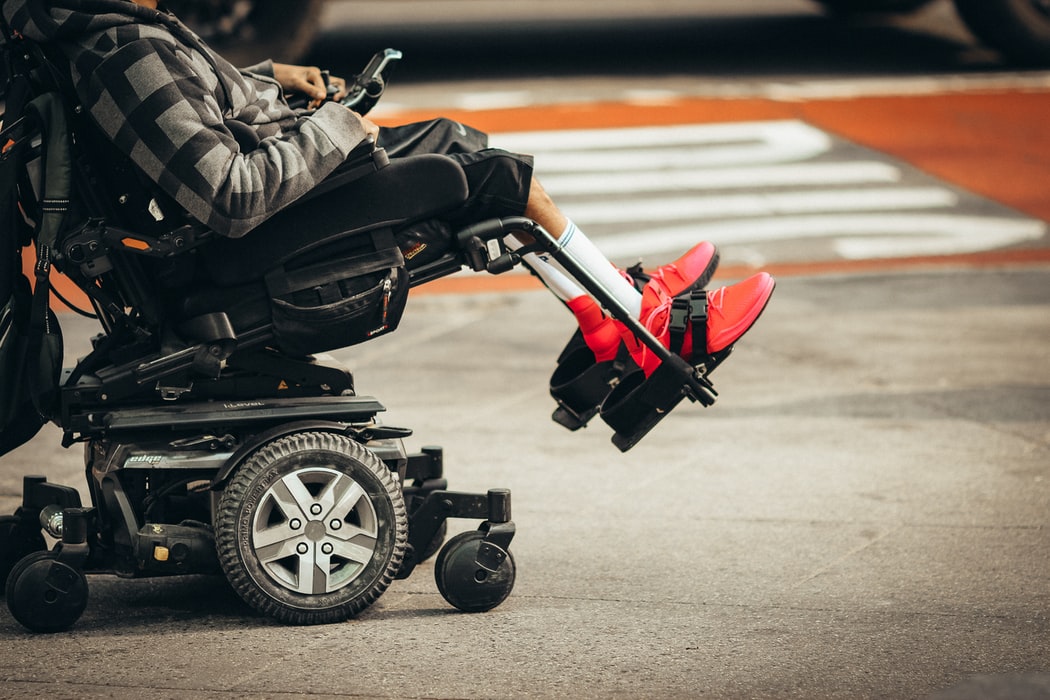Accessibility in public spaces – especially in public transport – is unfortunately still a major struggle for people with reduced mobility.
Yet it should by no means be treated as a niche issue: In the UK alone, there are 13.9 million people who rely on accessible public transport for a variety of reasons.
And it is not only for people with congenital or permanent disabilities that the prospect of greater accessibility means a better quality of life: people of all ages and conditions can be affected by a disability at some point in their lives: the teenager that got injured playing sports, the young parents who struggle with a pram or the elderly who have trouble climbing stairs.
The trend of an ageing population is set to become even more acute in the coming years, with 1 in 4 UK residents predicted to be aged 65 and above by 2050. Poorly accessible local transport would contribute to intensifying the already huge problem of loneliness.
The British have recognised the issue: in 2018, the government published a strategy paper entitled “Inclusive Transport Strategy: achieving equal access for disabled people” (in short IST). The overall goal is to make public transport ( referring to all available transport options, from buses to planes) more accessible for people with disabilities by 2030.
This policy paper pays particular attention to the following 5 points:
1. Raising awareness of passenger rights and how to enforce them
It happens that people with disabilities feel unfairly treated, for example when promised assistance is not provided or other aspects do not function in the same way as non-disabled people can expect. One example is the fare, which should not rise on any form of transport (bus, taxi, and so on) simply because an electric wheelchair has to be carried, for instance.
The UK government promises to provide better assistance throughout the journey and, if a passenger wants to raise a complaint, to simplify communication channels so that he or she can easily express his or her views.
2. Better training of staff
In order for public transport staff to be more responsive to the needs of persons with disabilities, the British governments are encouraging transport operators to provide training to their staff. In November 2020, the Department for Transport (DfT) therefore introduced a ‘disability awareness training package’, which was developed together with the Disabled Persons Transport Advisory Committee (DPTAC).
The aim is not only to increase the use of public transport by people with mobility impairments through more professional assistance but also to raise awareness among all other passengers through a public campaign about the fact that discrimination is a criminal offence and can be punished accordingly.
3. Better Information
In 2018, the DfT published an interactive map, initially tailored to railway stations, to make it easier for passengers to get information about the accessibility of specific stops with just one click. This map is also specifically adapted to the needs of visually impaired people.
This tool is designed to give people with disabilities the chance to plan their journey more freely and to give them a confident feeling as they are reassured that they might not suddenly get stuck at any point in the travel chain.
4. Inclusive (physical) infrastructure
This aspect is probably one of the most important for people with disabilities when it comes to travelling without barriers and difficulties.
Of course, overcoming barriers created by missing and incomprehensible passenger information is also important in this context. In its strategy paper, the DfT, therefore, announces, among other investments in the existing physical infrastructure, to significantly improve audio-visual information in public buses and thus enable people to plan their journeys more independently.
5. Future of inclusive transport
In order to continue to provide relevant mobility solutions in the future and to be able to respond optimally to the needs of people with mobility impairments, a large-scale study was carried out in 2020 that focused on the areas of micro-transit, buses, taxis and rental cars, as well as Mobility as a Service. All these areas and even more aspects were considered against the background of inclusivity. Further results can be found in detail here.
It is important to note that the topic of inclusivity must be comprehensively considered, especially when we talk about future mobility trends. One important point, for example, is the accessibility of mobility services regardless of the physical infrastructure. Since many of the new mobility services can be booked via digital media, such as mobile apps, barriers may arise again, for example, because older people are generally less likely to use a smartphone. These and other barriers need to be taken into account and addressed.
To document progress towards more inclusive public transport, the UK government regularly publishes news on its website. This strategy is certainly an important step, not only to make life easier for many people but also to show “We see you, we hear you and we want to achieve a more inclusive society”.
Accessibility – A society-wide responsibility
However, other barriers cannot simply be improved by construction measures: Tolerance and support.
In the UK, one in four people with disabilities say that they feel uncomfortable travelling on public transport because of ‘negative reactions’ from other passengers and therefore avoid using public transport as a result; a further 40% say they often encounter difficulties when trying to travel by public transport (referring to rail).
These figures are alarming and should remind us of the importance of involving those who are affected in decision-making processes, giving them a voice and asking how the public transport travel experience can be improved for them.
In addition, it is important to be aware that it is not only physical barriers but also the gazes and comments of others that prevent people with disabilities from moving freely in public. Therefore, it is the responsibility of each and everyone to be sensitive to the needs of others in our daily lives and to break down barriers where we can.
This article might also interest you: DRT – a mobility solution adapted to people with reduced mobility





